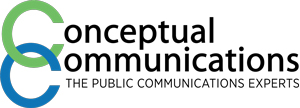
It’s 1994, and you’re playing “Go,” a strategy game with black and white pieces and a wooden board. And that’s when the idea strikes you. What if I created a barcode-like software resembling a Go board, that will increase efficiency and productivity?
Fast forward, and the Quick Response Code, AKA QR Code, is born.
History of the QR Code
Since its inception in 1994, the QR code, founded by Japanese company Denso Wave’s Masahiro Hara, has ebbed and flowed over the decades. Originally adopted by the Japanese auto industry, QR codes have since expanded to almost every industry imaginable, from beauty and clothing to transportation and hospitality. But how did it get there?
Up until the late 20-teens, QR codes weren’t popular amongst marketers. In fact, there was a lot of chatter that QR codes were best left for industrial purposes and had no use in advertising and marketing whatsoever. Not only were QR codes frequently used inappropriately, like on highway billboards (which were impossible to scan while driving) and subway trains (which typically didn’t have internet connection), but they were linking to sites that weren’t mobile-friendly and were in general, difficult to use.
Up until 2017, mobile users were required to have a third-party app to scan QR codes that oftentimes didn’t work. On top of a negative user experience, they weren’t a good use of advertising dollars because too much ad space was being used for the code and explaining how to use it, rather than advertising a product or service.
The Resurgence
Since then, we’ve come a LONG way in improving user experiences and interfaces. In 2017, it’s no surprise that Apple changed the game with an update that allowed iPhone users to scan QR codes with their camera app. Fast forward to Summer 2020, and the use of QR codes EXPLODED.
Amid the COVID-19 pandemic when restaurants slowly began to reopen their doors, many turned to QR codes to provide touch-free dining experiences for patrons. From accessing menus to paying for tabs, QR codes quickly became indispensable in a contactless world.
QR codes continued to gain popularity as sort of newfound gateway to information. From tracing your coffee’s place of origin, to accessing behind-the-scenes content, and engaging in self-guided tours in museums, QR codes have certainly bedrocked themselves in our communications.
In a post-COVID-19 era, companies are continuing to utilize QR codes in their strategies- take the Coin Base commercial from the 2022 Super Bowl, where the crypto currency business used its one-minute ad slot to promote app downloads with a free crypto incentive. The results? 20 MILLION website views in 60 seconds and a 250% increase in app downloads.
Haven’t seen the ad? Click here to view Coin Base’s 2022 Super Bowl ad.
Leveraging the Power of QR Codes
Like many marketing tools, when used correctly, QR codes do their part to offer customers easy, streamlined access to information. So, how can you start leveraging the power of QR codes?
- For larger campaigns, make sure you have a landing page, so your website doesn’t crash.
- Repurpose codes into multiple materials, like emails, flyers, social media posts, menus, signage, and business cards.
- Use the call-to-action to send an email, follow a social media platform, or download an app.
- Look at the numbers! Check the most-scanned days, total scans for the campaign, and more!
